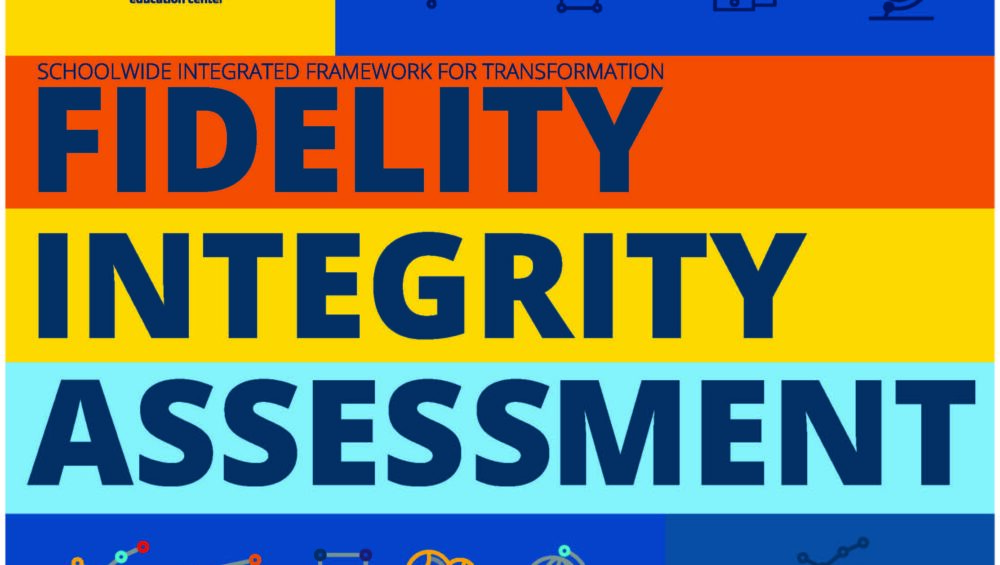Recently, I was having a conversation with a local school district representative about the SWIFT Education Center and the services we provide to support equity-based inclusive education. As usual, I got a little caught up in my impassioned plea about why all students should participate in and make progress in the general education curriculum. I started rambling on about the research to support inclusive educational practices and the inherent inequity of segregation for students with disabilities. Suddenly, the representative stopped me and said, I understand “why”, but I don’t know “where” to start. She asked me, “what do you do to support districts who believe in inclusive education, but aren’t there yet? Where do you even begin?”
This conversation reminded me that just believing inclusive education is the right thing to do is not enough to make it happen. State, district, and school leaders may want to, and even believe they should, implement inclusive practices but knowing where to start can seem daunting.
Implementing equity-based inclusive education is not as easy as just moving students from one placement to another. Moving students from a segregated classroom to a general education setting does not ensure students are meaningfully participating in and making progress in the general education curriculum with their peers. Too often I see students with disabilities moved from a segregated classroom just to be segregated again within a general education classroom. When a student is sitting in the back corner of a classroom with a paraeducator working on something totally unrelated to the work his or her peers are doing, then the student is not really experiencing the full benefits of inclusion. But, if moving students out of segregated settings isn’t enough, then how do school leaders know what supports need to be in place to ensure true equity-based inclusion is achieved?
The SWIFT framework helps answer this question with ten research-based features that compose the building blocks of inclusive education. SWIFT provides technical assistance and resources to guide implementation of each of the features—but even the most efficient school teams would be hard pressed to tackle all of the features at once. Therefore, schools need guidance on which components of each feature to prioritize during the transformation process. Luckily, SWIFT has a tool for that.
The SWIFT Fidelity Integrity Assessment (SWIFT-FIA) is a self-assessment used by school leadership teams to examine their implementation of SWIFT framework features. SWIFT-FIA helps school-based teams engage in conversations about what components of each feature they currently have in place. These conversations help teams pinpoint where they are in the stages of implementation for each item. SWIFT-FIA is scored on a 0-3 scale representing these stages: 0 = laying the foundation, 1 = installing, 2 = implementing, and 3 = sustaining schoolwide implementation. To score a SWIFT-FIA, a school leadership team reviews the components of each item and reaches consensus about which elements of the item are currently in place. If the school has not started installing any components of the item, they can begin laying the foundation by discussing the degree to which the item meets the needs of their school and exploring options for implementation. If the school has action plans in place and is implementing some components of the item, they are in the installing stage of actively putting the item in place. Installing may include action items such as identifying key personnel responsible for carrying out the task. If a school has all of the item components in place and is actively working to refine and improve them, the school is in the implementing stage. When a school has all of the item components in place and is actively monitoring implementation to continuously improve practices, they are in the stage of sustaining schoolwide implementation.
By self-assessing stage of implementation across SWIFT features, school leadership teams gather valuable data to guide implementation of inclusive practices. SWIFT-FIA provides a roadmap to teams that feel overwhelmed with where to begin. The results of SWIFT-FIA can be used to identify and prioritize practices for transformation or continuous improvement, develop action plans needed to install and implement practices, and to reflect on the effects of action plans on practices. Teams may choose to use the data to identify strengths in items they are currently installing. They can then leverage their strengths to refine and improve their current practices. On the other hand, teams may choose to use the data to identify the next steps needed to install items that are priorities but not yet in place. SWIFT-FIA gives teams the information they need to guide these implementation decisions.
Even though school transformation can be complicated, my answer to the question of “where you even begin?” is simple: You begin with SWIFT-FIA.
SWIFT-FIA is available at swiftschools.org/shelf. A SWIFT-FIA tracking tool may be used to capture results and graph changes over time and is also available at swiftschools.org/shelf.
If you are interested in learning more about how SWIFT-FIA can be used by your school or district to guide implementation of equity-based MTSS, contact SWIFT at swift@ku.edu.
 Allyson Satter currently works as a Project Coordinator for SWIFT. Previously, she worked as a special educator, which is where she first learned the value of equity-based inclusion.
Allyson Satter currently works as a Project Coordinator for SWIFT. Previously, she worked as a special educator, which is where she first learned the value of equity-based inclusion.

